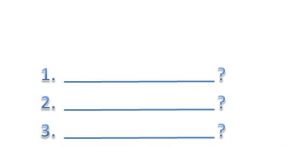
3 Greatest Questions Successful People Ask
The difference between successful people and those who are not is often as simple as asking yourself these three questions: what can I do, what can

The difference between successful people and those who are not is often as simple as asking yourself these three questions: what can I do, what can

As a coach, I often see leaders frequently ignore and squelch their emotional voices. But this approach doesn’t win much respect with our largest US

When you hear “leadership vulnerability,” what comes to mind? In my work as a coach, I often see how the word vulnerability generates negative impressions

Most of us are too immersed in our behaviors and habits. That’s why people take assessments and participate in 360º feedback—to see what they can’t.

I’ve been writing about leadership courage. We often forget that fears are part of the universal human experience. They’re normal, to some degree, for leaders

In the face of today’s challenges, smart leaders can attest to what Marshall Goldsmith famously stated in his book by the same name, “What got

In today’s dynamic environment, leading is tough. It requires both innate and learned abilities. I wrote about natural abilities in my last post. These are

As a leader, are you intentionally (and effectively) helping your employees in cultivating strengths? One of the aspects people value in their jobs the most

An organization’s health is only as sound as its leader’s decisions. Some companies prosper from wise leadership directions, while others struggle after flawed choices—choices that

How a leader responds to adversity reveals how effective that leader truly is. Reactions to setbacks or crises not only test leadership character but define

Business is an active, demanding endeavor. Only those who consistently apply themselves succeed. Organizations that thrive require leaders who actively dream, plan, engage, solve, pursue,

Surveys and studies indicate global job dissatisfaction is at a two-decade high. Disengaged employees account for nearly 70 percent of the workforce, which significantly affects







